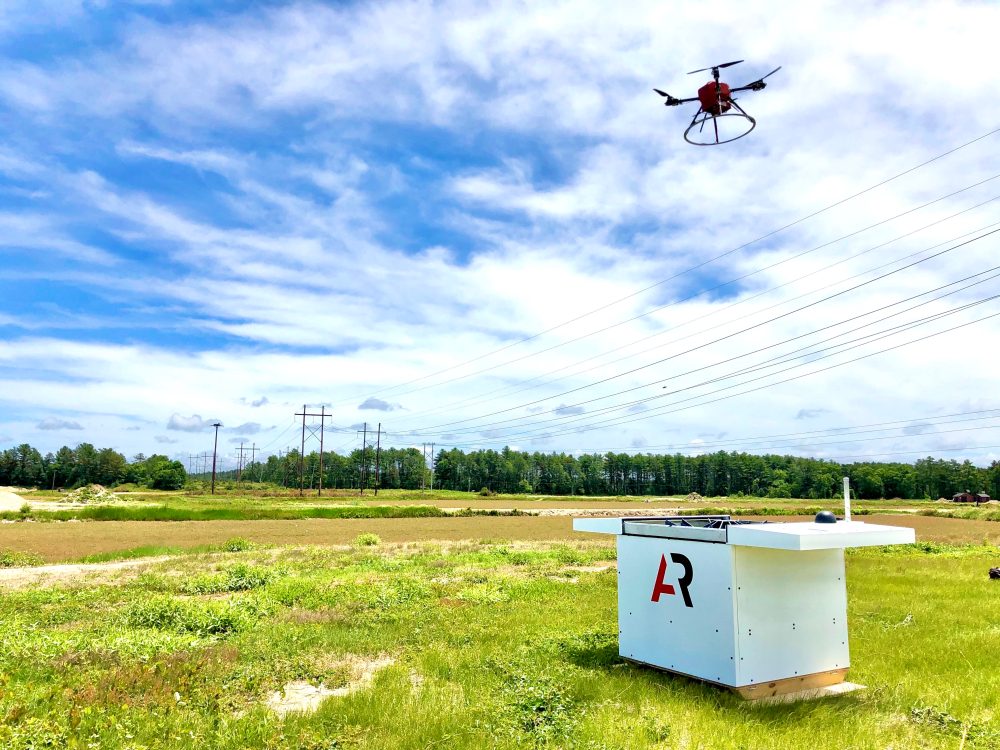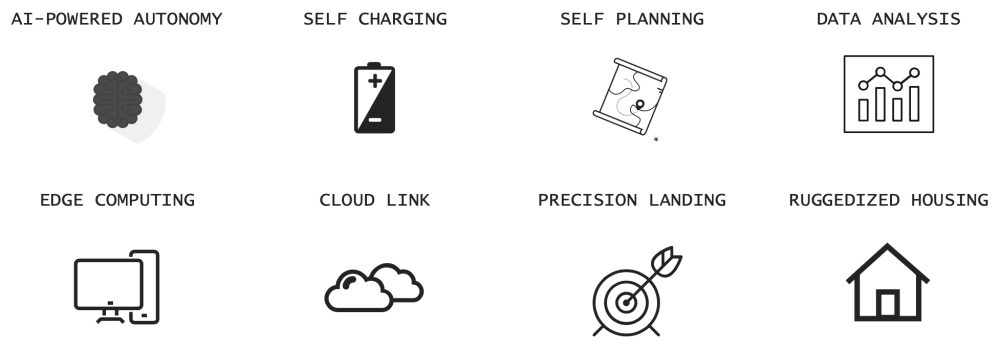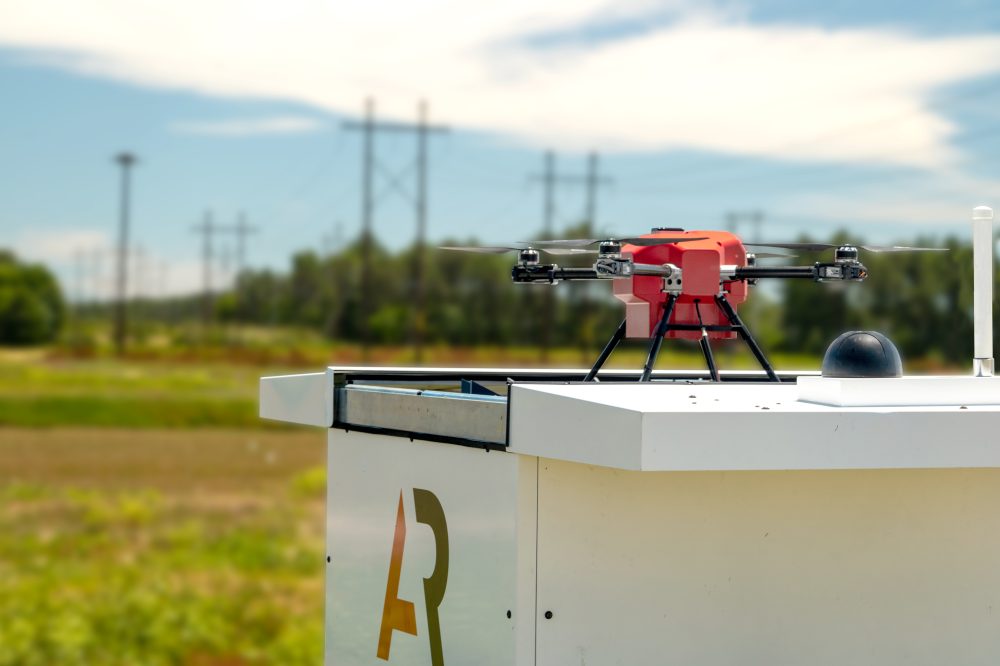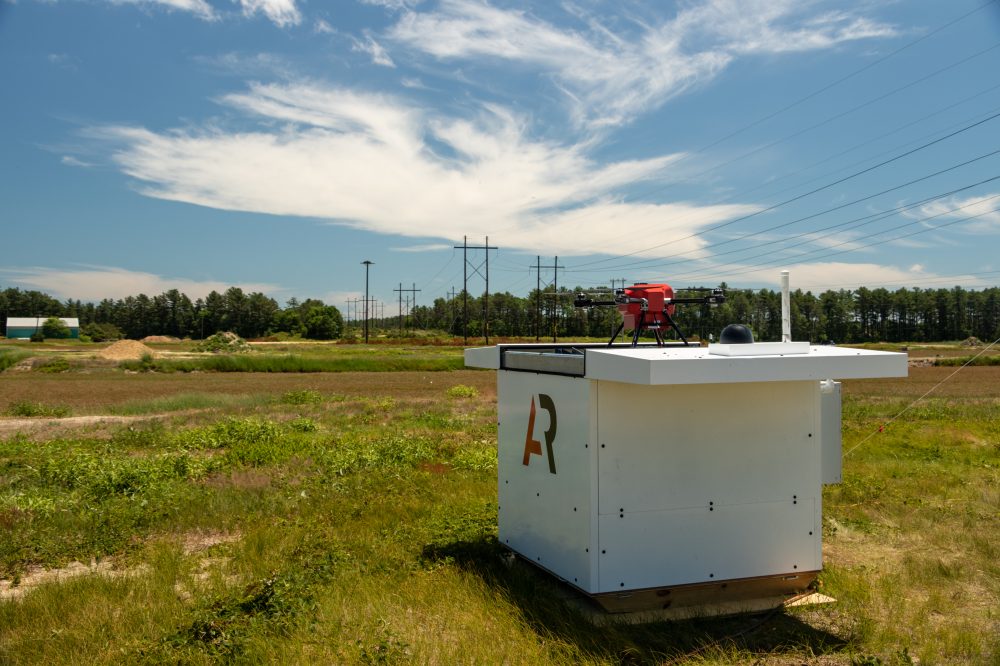
In a significant industry “first,” a US company has received FAA permission to fly its automated drone-in-a-box system. This is a pretty big deal, with ramifications down the road for many other players in this sector.
The concept of a “drone-in-a-box” has been around for years. The idea is simple: A drone departs from some sort of housing that is capable of charging the UAS and offering safe harbor from weather. The drone carries out its mission. And then it returns to the same station (or, possibly, another identical station), where it recharges. That downtime in the station might also include a data dump and diagnostics checkup. And then, when the time is right, off heads the drone on another mission.
Most importantly? There’s no pilot on-site flying the drone.
A whole new meaning to “remotely piloted”
You can see the appeal, of course. A drone carrying out a repeated mission can truly be a flying robot, autonomously gathering data over and over again. There are multiple use-case scenarios, including inspection and surveillance, doing volume calculations, precision agriculture, and more. Any recurring job that would normally require a pilot could, theoretically, be automated and monitored remotely.
We seem to recall that one of the first to develop this technology was Israel-based Airobotics, which received permission from the country’s civil aviation authority back in 2017 to carry out flights without a pilot on location. This video might ring a bell with some of you:
American Robotics receives FAA permission
Now, American Robotics has received FAA clearance to operate its drones on autonomous flights. Its Scout System has received a partial green light with an FAA Waiver valid until January 31, 2023; you can read the FAA documents here. It delineates specific areas where these flights can be carried out and requires that NOTAMs be issued so that those operating manned aircraft will be aware of the flights.
Still, it’s a very big step.

Here’s how American Robotics describes its offerings on its website:
Everything is automated, from landing to charging to data processing. Once installed, Scout systems will run missions autonomously, collecting, processing, and analyzing data. Never touch a remote control again. Scout drones live in your field inside a ScoutBase, a weatherproof charging and data processing station. With the help of proprietary software and hardware they are able to operate without the need for a human pilot. Interact with one Scout, or a fleet of Scouts, from your office remotely via ScoutView, our web and mobile application. Set your Scout Systems to collect data on a schedule, or initiate missions on demand.
https://www.american-robotics.com
It’s all about autonomy

For American Robotics, this is a major “first”
There are many applications where this kind of deployment makes perfect sense. If the mission is a recurring one – and even if new missions are uploaded remotely – the long-term efficiency of this approach makes sense.
With these approvals, American Robotics is ushering in a new era of widespread automated drone operations. Decades worth of promise and projection are finally coming to fruition. We are proud to be the first company to meet the FAA’s comprehensive safety requirements, which had previously restricted the viability of drone use in the commercial sector. We are very grateful for the FAA’s willingness to work closely with American Robotics over the past four years on this precedent-setting authorization. With this set of approvals, American Robotics can begin safely operating our automated Scout platform for the benefit of the energy, infrastructure, agriculture, and security market verticals, helping unlock the projected $100 billion commercial drone market.
Reese Mozer, CEO and cofounder of American Robotics

A big deal for the industry
This doesn’t mean that the floodgates have opened – yet. But it’s a strong indicator these kinds of autonomous systems are likely to flourish down the road.
The commercial drone industry is growing quickly and providing significant benefits to the American public, but enabling expanded operations beyond visual line of sight is critical for the industry to truly take off. Automated BVLOS operations are particularly important to opening the commercial sectors to the drone economy, including the agriculture and industrial verticals. Key to these operations is the use and FAA acceptance of new and innovative safety technologies, such as detect and avoid (DAA) sensors and software-enabled automation. American Robotics’ groundbreaking and exciting FAA approval is an important and significant step forward for the commercial drone community as a whole. The commercial drone industry looks forward to building on American Robotics’ success and continuing to work with the FAA toward safe integration of UAS into our National Airspace System.
Lisa Ellman, executive director of the Commercial Drone Alliance
DroneDJ‘s take
I once worked for a Canadian startup drone company that also was experimenting with charging stations. Its business model is long-range asset monitoring, with its VTOL aircraft nesting in similar stations.
The idea, clearly, makes a lot of sense. We’ve also seen, with Skydio’s AI-enhanced drones, a willingness from the FAA to grant BVLOS waivers when it’s assured that the missions can be carried out with minimal risk to manned aircraft or people (and property) on the ground.

The future of this industry, or a significant part of it, will belong to those enterprise suppliers that combine AI with end-to-end automation. Why have a pilot or other support on the ground if the process can be automated?
It’s not going to happen over night. We’re looking at years, rather than weeks or months. But – for some tasks – this will undoubtedly be the future. Congrats, American Robotics.
FTC: We use income earning auto affiliate links. More.





Comments